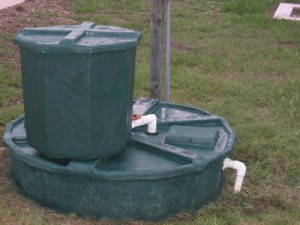 Media filters consist of a lined or watertight structure containing media of predetermined specifications. The media can be a variety of materials that provide surface for bacteria to colonize and for biochemical and physical treatment processes to occur. There are two broad categories of media filters: single-pass and recirculating.
Media filters consist of a lined or watertight structure containing media of predetermined specifications. The media can be a variety of materials that provide surface for bacteria to colonize and for biochemical and physical treatment processes to occur. There are two broad categories of media filters: single-pass and recirculating.
The general treatment train for media filters is as follows: after being collected in a septic tank or recirculation tank, effluent is evenly distributed over the media surface. Regardless of filter type, the media provides a surface area for bacteria and other microorganisms to grow. As the wastewater trickles down through the filter bed, it is treated by the organisms growing on the media. Wastewater collects at the base of the filter where it is then dispersed to either a soil absorption area, or sent back to a recirculation tank for additional treatment. The filter bed is never saturated with effluent, and the presence of air promotes establishment of aerobic microorganisms.
Most media filters are designed as buried filters, covered with 6 to 10 inches of breathable top soil and planted to grass. Other media filters are “free access,” meaning that their surface is either in direct contact with free air or is accessible via a hinged lid or risers that come to finish grade.
Types of media filters:
